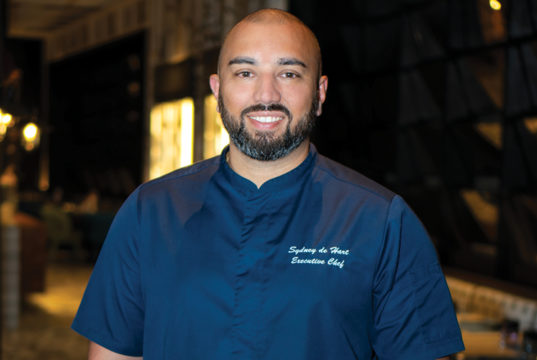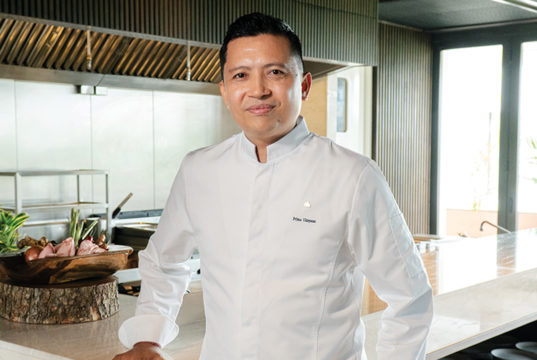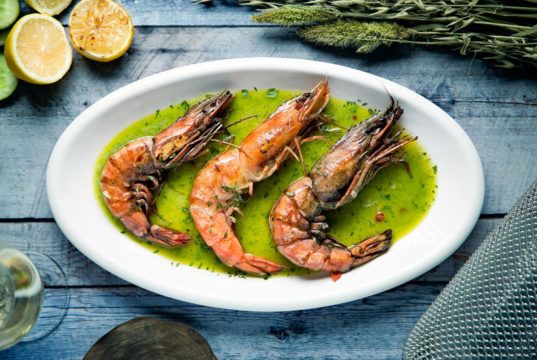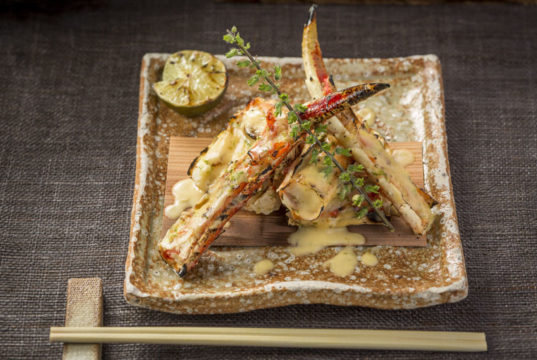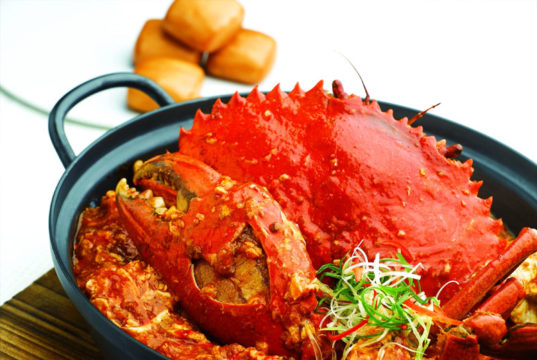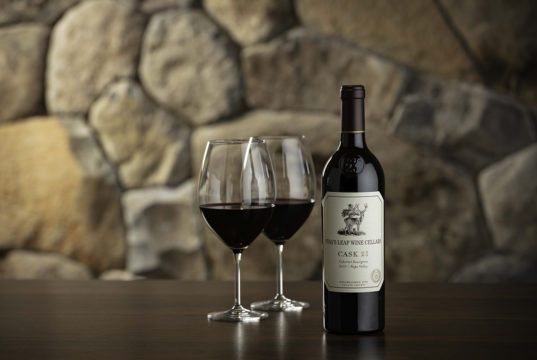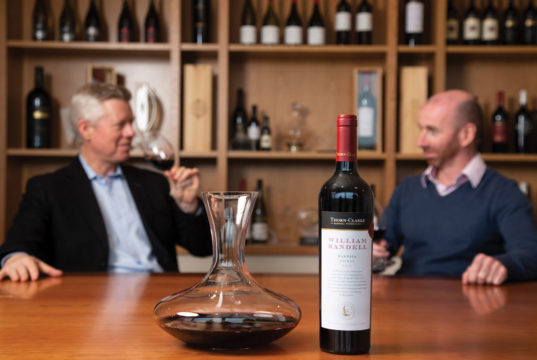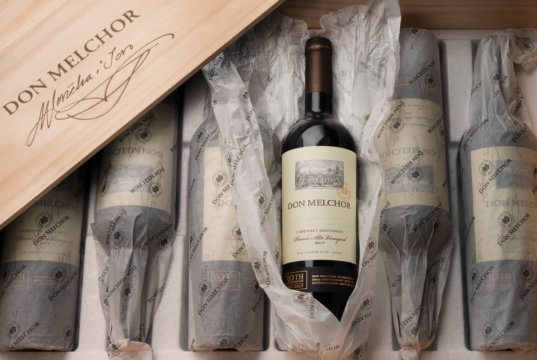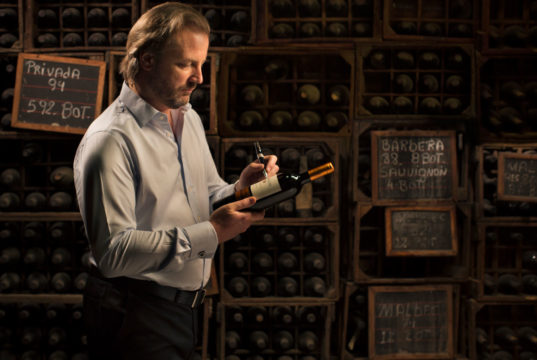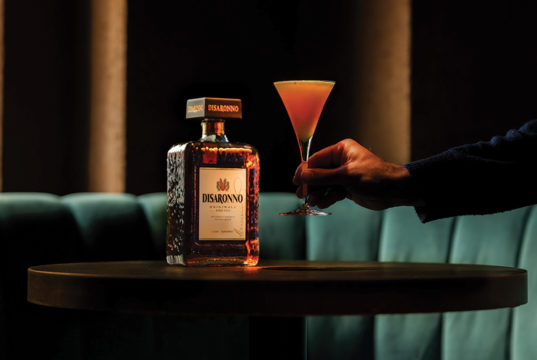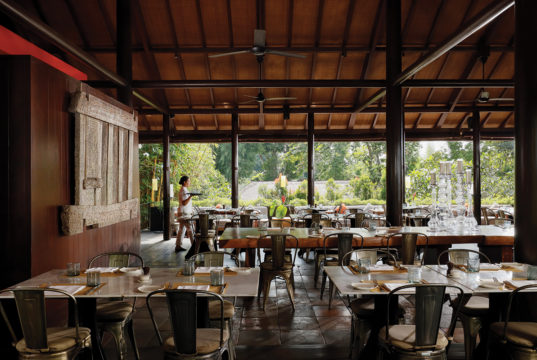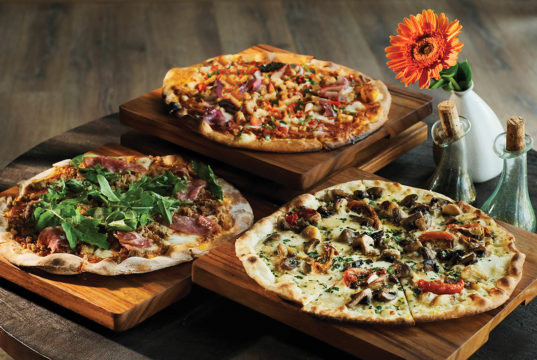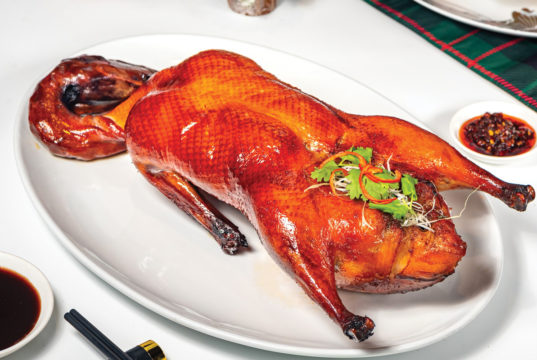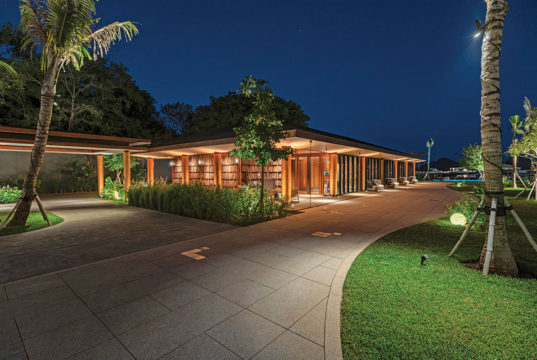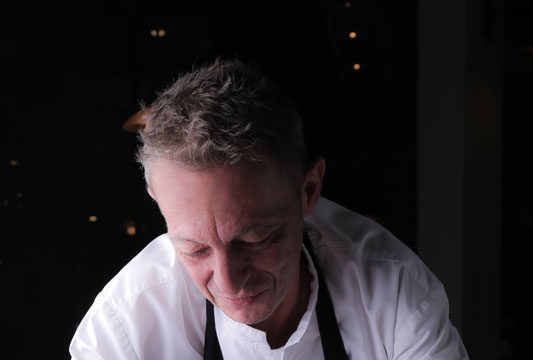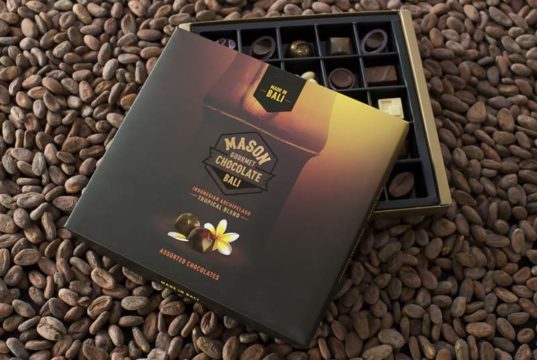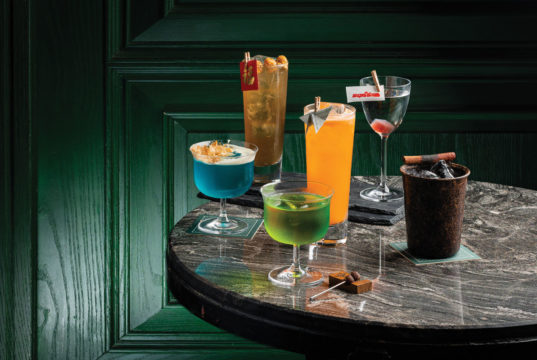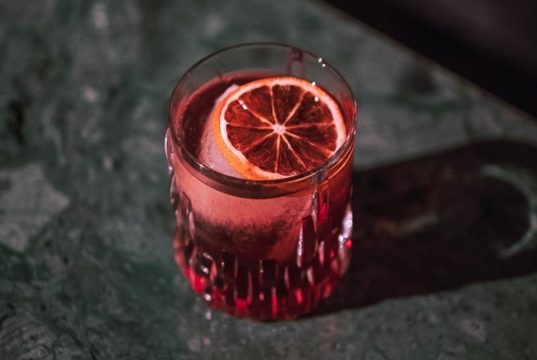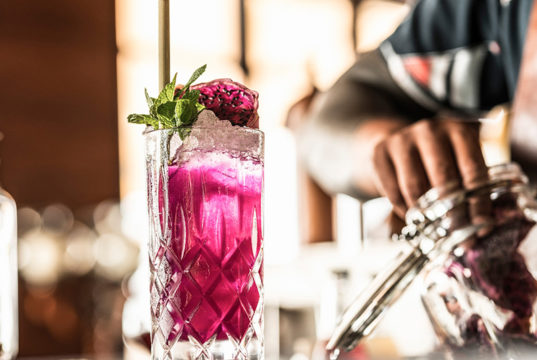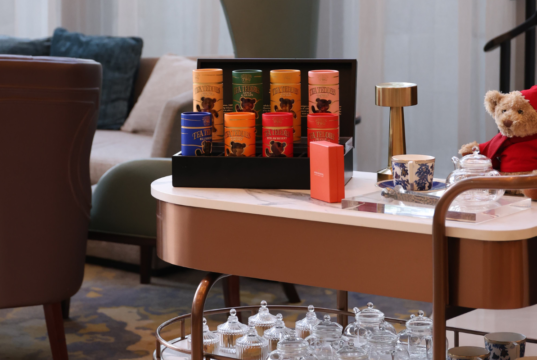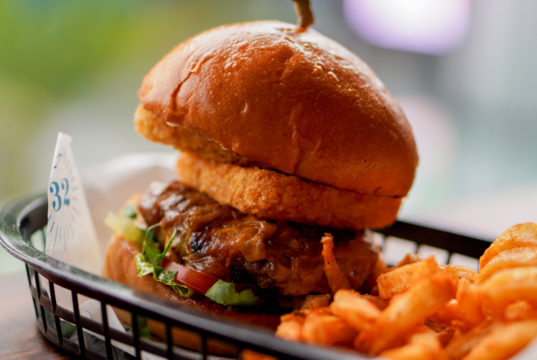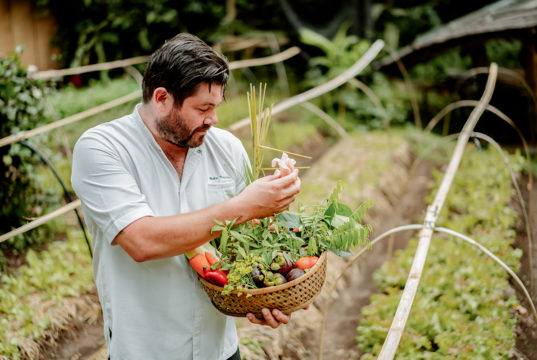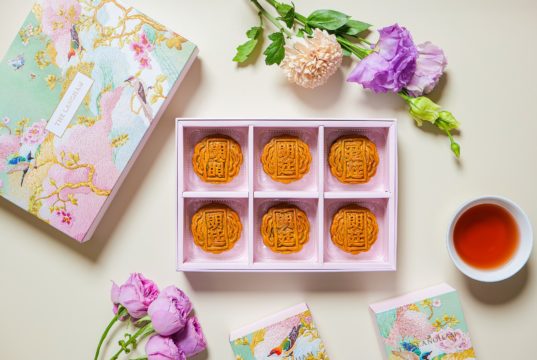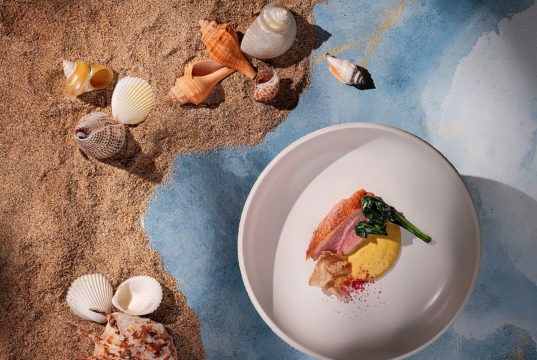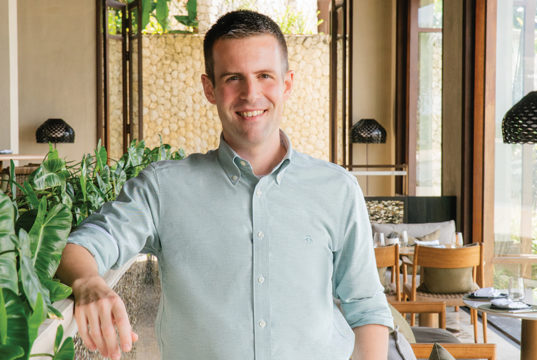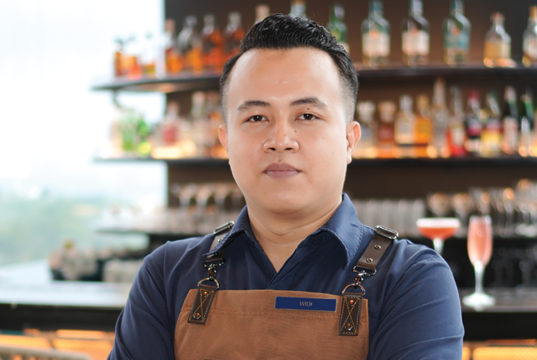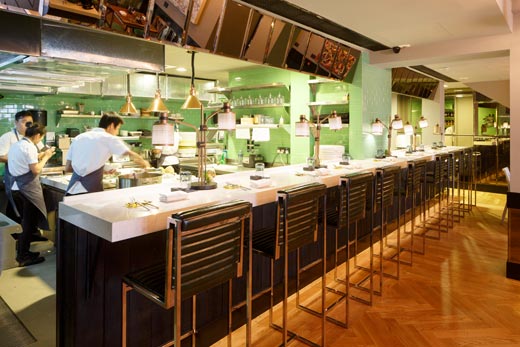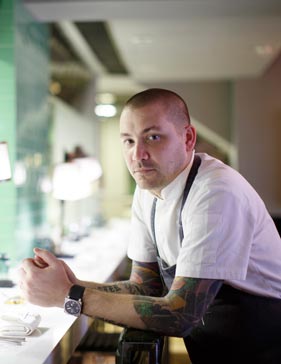Ryan Clift, the man behind Singapore’s famed Tippling Club and the recently opened DING DONG, has gone from humble beginnings to running a veritable F&B empire that has helped changed the face of eating and drinking in The Little Red Dot forever.
Chef and restauranteur Ryan Clift could be described as the Cinderella of the culinary world – with less glass slippers and more rockstar tattoos, of course. The reason being, this British-born kitchen superstar started out by washing dishes at a London restaurant, working long hours and doing unglamorous chores while other teenagers his age were still in school. But his life was soon to change forever, when a chef handed the young dishwasher an apron and the tools to realise his gastronomic dreams.
His newfound passion and unmistakeable talent led him to some of the world’s most esteemed restaurants, where he worked with some of today’s top chefs, including Marco-Pierre White, Peter Gordon, Emmanuel Renaut, Shannon Bennett and Raymond Capaldi. But this culinary genius didn’t stop there. He took his talent to Australia where he excelled as Head Chef of Vue de Monde – one of Australia’s most acclaimed restaurants. Then, in early 2008, Clift moved to Singapore to start his own venture, determined to take modern food and cocktail pairings to a new level. Thus, Tippling Club was born.
As an incredibly influential bar and restaurant that helped to kick-start the city-state’s dynamic and innovative dining scene, Tippling Club is the flagship of Clift’s growing culinary empire. His next establishment, Open Door Policy, premiered in 2011, and eight months ago Clift entered new territory with DING DONG, featuring his take on Southeast Asian cuisine. Following this latest opening, as well as the recent move of Tippling Club to a funky new address, we thought we’d catch up with the kitchen maestro to talk about his impressive successes, DING DONG’s first chapter, and what the future holds for the gastronomic rockstar.
Q: With an impressive CV under your belt and some of the world’s best chefs as your mentors, you have gone from a fourteen year-old dishwasher to a kitchen celebrity. What have been the best moments of your culinary career?
A: From past to present, I would have to say the first was when Vue De Monde was awarded three hats by the Age Good Food Guide in Melbourne. I was the Head Chef (my first Head Chef role) and it was my own food! It was an awesome feeling to know we were number one in Melbourne and that the hard work was starting to pay off. Following that, it would have to be the opening of Tippling Club, finally realising I’m now in control of not just the kitchen, but the whole restaurant’s future. It was very uplifting.
Q: Tippling Club is one of Singapore’s most famous dining venues, named in the Miele Awards as one of the “Top 20 Restaurants” in Asia. What has been the most rewarding aspect of being at the helm of such an esteemed restaurant?
A: For me, it would have to be seeing my staff develop. I think I am one of the luckiest chefs around because my team has been with me for over five years now and they have all signed up for more. It’s a fact in the industry that no matter how well-known or famous the chef is, the success is also down to the team behind him, helping him reach the top.
Q: From one success to another, you have recently opened DING DONG to rave reviews. What inspired this Asian-influenced restaurant?
A: Although I’m a hand-on-heart, “God Save the Queen” kind of Englishman, I kind of defected to the other side of the globe 15 years ago and landed on the shores of Australia. And to my surprise, I was bombarded with amazing Asian food from all over Southeast Asia. Being a “Pomme” (as us Brits are known as in Australia), I wasn’t that familiar with a lot of the flavours. As a chef, that’s like waving a red flag at a bull, so I took in as much of the cuisine as physically possible. And being much closer to Asia, I made each country my holiday and travel destinations wherever and whenever I could.
Then came the modern Asian dining boom in Australia, making Asian cuisine a staple in many Australian capitals. With this, my love and respect for the flavours of Southeast Asia also boomed, so it seemed only natural to try and bring a little bit of this love to Singapore’s central business district and at an affordable price point.
Q: DING DONG then, is an ode to Southeast Asian flavours, which is quite different to Tippling Club’s modern dishes and Open Door Policy’s casual, bistro style plates. How did you come to master each style of cuisine and what made you choose to make each restaurant different from the next?
A: This year, I will have been cooking for 22 years professionally. In that time, I’ve seen a lot of things, eaten my way around the world and been extremely fortunate to spend time in the best kitchens with the greats. Thanks to this experience, I have always kept an open mind, not following just one style of gastronomy. As you know from Tippling Club, food science is my passion, expertise and favourite direction, but to wear blinkers when there is so much to see would be a disgrace, not only to the cultures around me, but to the people I have met along the way.
Q: So what can we expect from DING DONG that we don’t see in your other venues?
A: You won’t find home-made chilli sauce or braised red curry dishes at Tippling Club, nor will you find smoked pork bao or fried sushi rice at Open Door Policy. But what you will find at any of the three outlets is my creative and original twist, something I make sure to inject into everything I create on every menu.
Q: The restaurant has been open for just over eight months and yet it has already caused a stir amongst foodies across Asia. Did you expect DING DONG to be such a success so quickly?
A: You always hope that things go in your favour, and the team at Food Collective and I are very happy that it did. But I must admit, there were — and are — a lot of local Singaporean critics that still maybe don’t quite get that DING DONG is not trying to be an authentic restaurant and that the food is an interpretation of Southeast Asian flavours through my eyes. It still cracks me up when I hear people say, “It’s not a proper chendol!” Damn right it’s not — I don’t see a hawker making sweetcorn ice cream in a paco jet blender, topped with caramelised popcorn, do you? Haha!
Q: With so many of these innovative dishes lavished onto DING DONG’s first menu, how do you plan to keep the DING DONG excitement alive in Singapore’s dining scene?
A: Over the coming months we will be firing out new and exciting dishes and new cocktail lists to keep everyone’s bellies happy, and as always, you can expect my playful twists and turns from each new creation. We are also looking at bringing in guest chefs from different parts of Southeast Asia to treat our regulars to a taste of new and exciting concepts.
Q: Cuisine styles and restaurants aside, how do you describe your own style?
A: Exciting, playful, inventive, original but most of all, tasty! It’s real food!
Q: You hosted National Geographic’s “Chef on the Road” TV programme; what did you learn from your travels and how have you injected this into your cuisine?
A: The best thing about it was going to places for the first time, places I never thought I would ever drive through – places like the deserts of Rajasthan or the mountains of Korea. I haven’t really applied the things I found to the food back here in Singapore yet, but there are a few things on the boil in the Research and Development kitchen of the Tippling Club that pay homage to a few cool things I’ve experienced on my trips. And they will certainly be making an appearance – in the not so distant future!
Q: You have been dubbed the “gastronomic superstar of tomorrow.” What does tomorrow hold for Ryan Clift and what should we look out for in 2014?
A: My baby – Tippling Club – closed its doors in Dempsey Road on the 14th of December and re-opened on the 18th of December at 38 Tanjong Pagar Road. It was a one year project that aimed to build a new home for Tippling Club that boasts not only a new and exciting fit-out, but a test kitchen on the second floor to really set us in good stead for an amazing 2014. With it up and running, it has finally given me the creative freedom to go crazy! So watch this space!
Textured beetroot with Oxtail and Sorrel
Not one for novices or faint of heart, this recipe should give you some insight into just how complex and creative the wonderous dishes of Ryan Clift really are.
FOR THE OXTAIL
• 2kg oxtail
• 5 cloves
• 3 star anise
• 1 cinnamon stick
• 1litre beetroot juice
• 1litre port
• 1litre veal stockTO MAKE
1. Sear the oxtail until golden then set aside to cool to room temperature.
2. Add all other ingredients to a heavy based pan and reduce the sauce by 2/3rd. Allow to cool to room temperature.
3. Divide the ingredients between 2 large vacuum bags and vacuum.
4. Sous vide1 at 85 degrees for 12 hours.
5. Once cooked, allow to cool in the bag before separating the reserve liquid for the finished dish.
FOR THE RE-STUCTURED BEETROOT:
• 500gr beetroot puree (from salt baked beetroots)
• 15gr F-50 methyl cellulose2
• 30ml sherry vinegar
• 20gr salt
• 3gr pepper
TO MAKE:
1. Blend all the ingredients together in a Thermo-Mix3.
2. Vacuum and store at 4 degrees Celsius for 12 hours.
3. Pipe the mixture into sphere Pavoflex4 moulds and freeze.
4. When required, reheat the balls in 500ml fresh beetroot jus at 75 degrees to set them.
FOR THE CANDY BEETROOT CHIPS:
• 400gr beetroot puree (from salt baked beetroots)
• 60gr icing sugar
• 1g xantham gum5
• 70gr Isomalt6
• 15gr glucoseTO MAKE:
1. Blend the Isomalt, icing sugar and Xantham gum into a fine powder. Add the puree and the glucose and blend until smooth.
2. Spread the mixture onto a dehydrator sheet with the circle stencil and dehydrate over night.
FOR THE HORSERADISH CREAM:
• 1litre milk
• 1 horseradish peeled and grated
• 300gr yoghurt
• 30ml lemon juice
• 18% Ultra-Tex 48
• 8gr salt
TO MAKE:
1. Infuse the milk with the horseradish by bringing it to the boil and letting it infuse for 30 mins.
2. Pass the milk through a fine sieve, squeezing well to extract all the milk. Allow to cool.
3. Put the milk, yoghurt, salt and lemon juice into the Thermo-Mix and blend on speed 4 until emulsified.
4. Sheer in Ultra-Tex until it reaches the thickness of a fluid gel.
5. Set aside.
FOR THE SORREAL EMULSION
• 500ml clarified apple juice
• 200ml English sorrel
• 50ml Le Chateau Estoublon wine
• 0.5gr soy lecithin9TO MAKE:
1. Pour the apple juice into a metal bowl which has liquid nitrogen10 in it. Note: don’t use too much nitrogen as you don’t want the juice to freeze, you just want it to stay really cold.
2. Pour juice into a de-canting funnel and leave until the juice has completely separated.
3. Drain the juice and set aside.
4. Juice the sorrel leaves through a herb press, then add to the apple juice.
5. Finish by adding the lecithin, olive oil and blending with a hand blender until dissolved and aerated.
FOR THE BABY BEETROOTS:
• A handful of baby beetroots, peeled
• 200ml sherry vinegar
• 150ml beetroot juice
• 150ml red wine
• 2 cloves
• 2 star anise
• ½ bunch thyme
• 1 bay leaf
• 10 peppercorns
• 3 juniper berriesTO MAKE:
1. Take all the ingredients and vacuum.
2. Cook at 85 degrees Celsius for 45 mins.
3. Strain the liquid and allow to cool.
4. Cut the beetroots into quarters, allow to cool and place back into the pickling liquid.
5. Serve with all the other prepared components.
———————————————————————————————–
1 Sous-vide is a method of cooking and it is French for “under vacuum”. Food is sealed in airtight bags before being submerged in a water bath for longer than normal cooking times – 72 hours in some cases. The temperatures are regulated and often much lower than normal. The result is evenly cooked food that is cooked the same on the outside as on the inside, leaving the food juicier.
2 Methyl cellulose is a chemical compound derived from cellulose. It is used to generate a thick consistency, as well as being used as an emulsifier to prevent the separation of two mixed liquids.
3 A Thermo-Mix is a unique food processor that can perform many kitchen tasks with incredible precision. To name just a few, it can blend, grind, puree, whisk, chop, steam and boil. It is one of the most advanced appliances on the market.
4 Pavoflex is a brand of platinum silicone moulds to shape food into desired shapes. Pavoflex in particular supply moulds in original and innovative shapes making them a top choice for many chefs5 Xantham Gum is often found in salad dressings, sauces and ice cream. It helps to prevent oil separation by stabilising the emulsion, although it is not an emulsifier itself. It is used to create a pleasant creamy texture by thickening liquids and helping everything bind together.
6 Isomalt is a sugar substitute that carries half the calories of normal sugars. It is used just like normal sugar, with similar tastes and texture.
7 Dehydrating food literally means to dry it out, sucking out all the moisture that it holds. It can be used to preserve fruit, vegetables, and animal proteins after harvest, although in Ryan’s dish, it is used to get a nicely dried, light crisp that retains the full freshness and flavour of the beetroot.
8 Ultra-Tex 4 is a premium cold water swelling modified food starch, derived from waxy maize. It has a smooth, short texture and imparts a rich and creamy feel to food.
9 Soy lecithin is used as a natural emulsifier or lubricant. It will help to stabilise the sorrel emulsion, improving its texture and flavour release, as well as reducing spattering.
10 Liquid Nitrogen is nitrogen in its liquid state. It is so cold that it can freeze food in just a few seconds. The rapidity of chilling leads to the formation of small ice crystals, which can help provide a smoother texture to the food.




